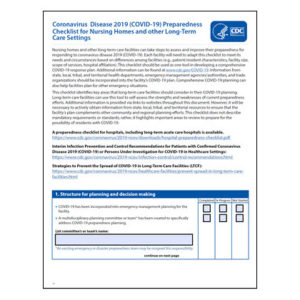The MOLST important document: End-of-life wishes
The Medical Orders for Life-Sustaining Treatment (MOLST) form has become electronic at St. Ann’s Community, Rochester, New York; and the community is the first in the state to make end-of-life care wishes a permanent part of a resident’s electronic health record (EHR).
The MOLST form documents decisions about the care for seriously ill residents and serves as a set of care instructions for all caregivers on what interventions—if any—the resident wishes to have near the end of life. By integrating the electronic form into the health record, all caregivers—including nurses, physicians and emergency medical personnel anywhere outside the community—will have access to the resident’s wishes in terms of intervention and care during a life-threatening event.
“Honoring the wishes of older adults regarding medical treatment is an important part of end-of-life care,” said St. Ann’s Chief Medical Officer Diane Kane, MD, in a press release. “The eMOLST registry ensures there will be shared, informed medical decision-making that reflects the resident’s wishes—which is the ultimate goal.”
Kane has championed the person-centered end-of-life topic at St. Ann’s, incorporating discussions about the importance of the eMOLST documentation into the routine patient care for all residents who welcome the discussion or who may be nearing the need for such decisions.
Integrating the MOLST form into electronic documentation has been strongly encouraged by the Institutes of Medicine, especially following the publication of its 2014 “Dying in America” report. However, many long-term care communities have yet to record their residents’ wishes on interventions—or even get families to understand why the specific documentation is important.
“St. Ann’s has dedicated five years of work to eMOLST implementation to ensure their residents and families are able to have thorough end-of-life discussions and complete eMOLST forms when desired,” said Patricia Bomba, MD, Vice President and Medical Director for Geriatrics at Excellus BlueCross BlueShield, the organization that operates the New York State eMOLST Registry. “Their leadership in the area of end-of-life care has been incredibly valuable for the Rochester community. We would love to see other organizations replicate the approach that St. Ann’s has taken, including the strong emphasis on quality end-of-life discussions and excellent documentation in eMOLST.”
To learn more about how your community can adopt the MOLST and eMOLST forms, visit https://www.nysemolstregistry.com/ to read what’s been done in New York state.

Pamela Tabar was editor-in-chief of I Advance Senior Care from 2013-2018. She has worked as a writer and editor for healthcare business media since 1998, including as News Editor of Healthcare Informatics. She has a master’s degree in journalism from Kent State University and a master’s degree in English from the University of York, England.
Related Articles
Topics: Clinical , Executive Leadership











